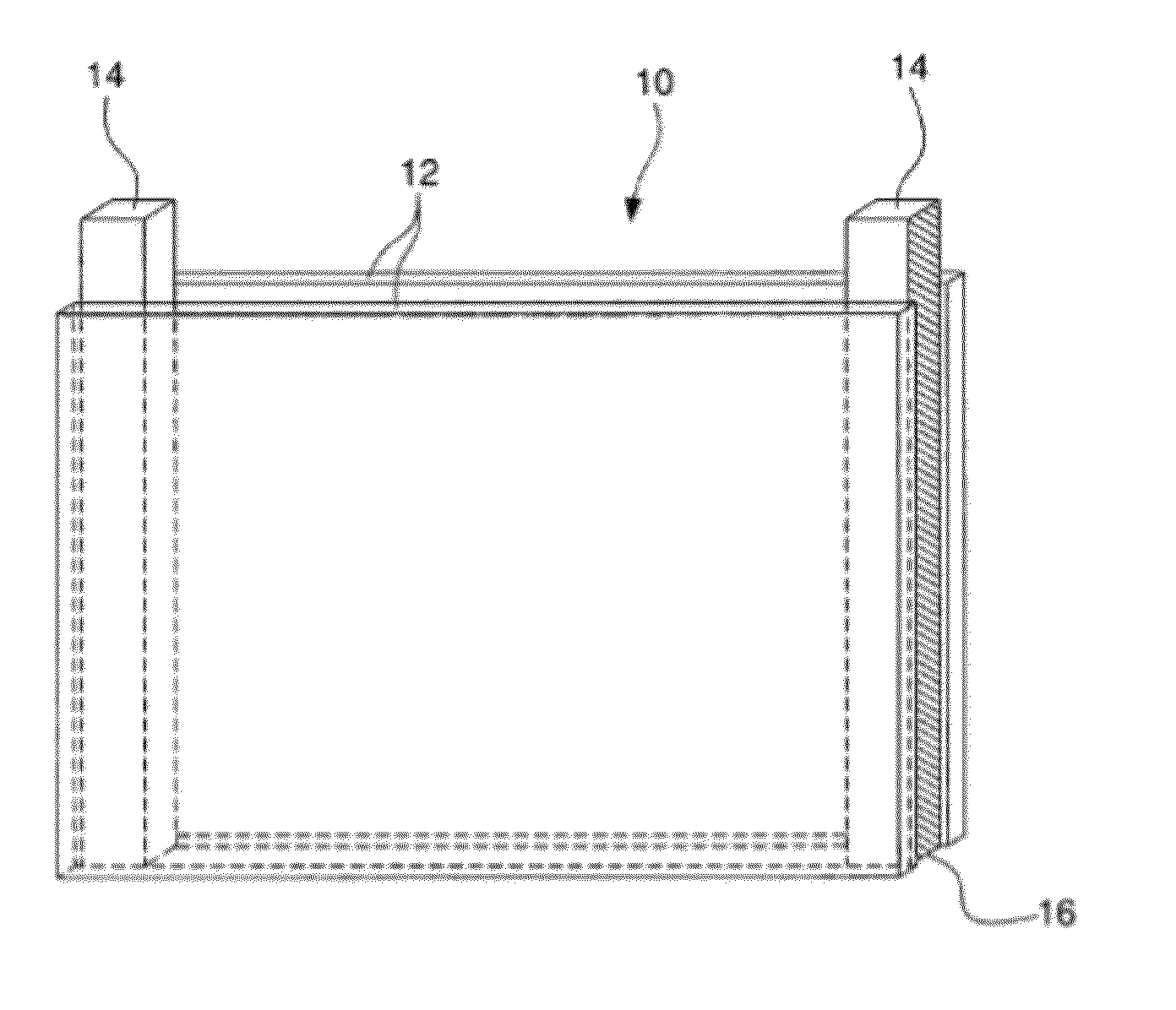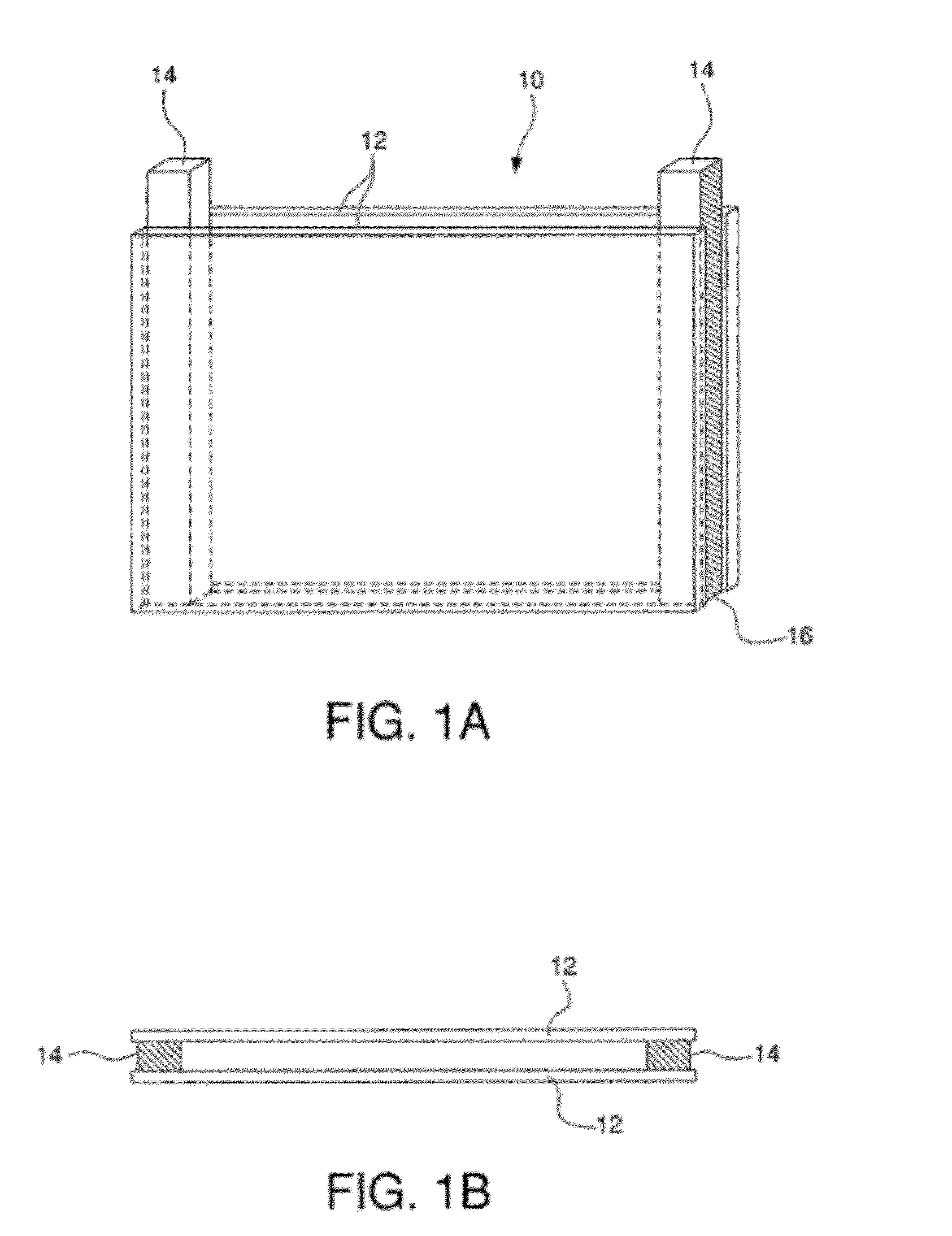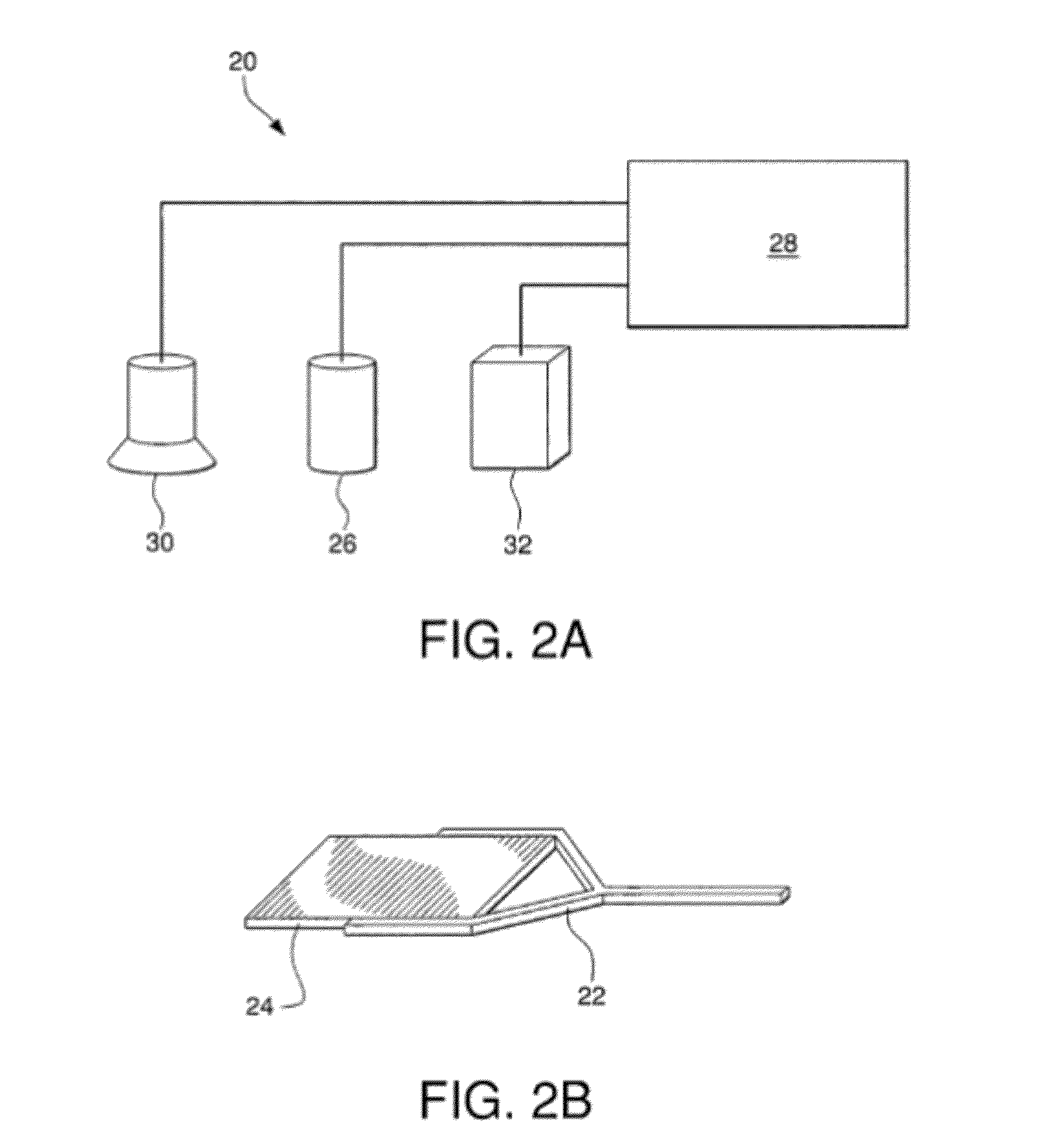Method For Rapid Detection And Evaluation Of Cultured Cell Growth
- Summary
- Abstract
- Description
- Claims
- Application Information
AI Technical Summary
Benefits of technology
Problems solved by technology
Method used
Image
Examples
example 1
[0120]Toxicity evaluation for individual growth or metabolism indicators in accordance with the invention was conveniently carried out as follows. Phosphor powder, Pd-meso-tetra (4-carboxyphenyl) porphyrin with two layers of glutamate dendrimer, was dissolved in five milliliters of distilled, deionized and filter-sterilized water and filtered through an 0.2 micron filter to provide a filter-sterilized solution with a concentration of 8 mM and a pH of 7.4. Three dilutions were made from the 8 mM solution to create stock solutions, such that an equal volume of each stock solution was used to dilute to the final concentration in the culture medium. The final concentrations tested were 4, 8 and 16 μM, respectively. Controls were supplied with the same volume of sterile water in lieu of a phosphor dilution.
[0121]Each of final phosphor dilution (1:500, 1:1000 and 1:2000, respectively) was prepared in duplicate. The paired volumes were inoculated with two different concentrations of Mycoba...
example 2
[0123]A slab gel hollow form was assembled using two 3 inch by 4 inch (7.6 cm×10 cm) glass plates separated by 0.5 mm thick spacers to form a rectangular space. Agarose was added to a final concentration of 1% agarose (wt / vol) to liquid culture medium (pH 7.2) containing physiological saline, casein hydrolysate and glucose. The mixture was heated to near boiling for about 30 minutes to make the gelling culture medium. The gelling culture medium was allowed to cool to about 40° C., then phosphor and bovine serum albumin (BSA) was added. The phosphor, Oxyphor G2, a Pd-tetra (4-carboxyphenyl) tetrabenzoporphyrin dendrimer (Dunphy et al., Anal. Biochem. 310:191-198 (2002)), was added to a final concentration of 2 micromolar. The BSA, which was not sterilized, was added to a final concentration of 1% (wt / vol).
[0124]The phosphors useful in the instant invention generally are not heat labile. However, Oxyphor G2 requires BSA, which is heat labile, for binding to give the phosphor a quenchi...
example 3
[0128]In contrast to the exemplified system above, providing a rapid method for measuring cells already patented in a thin, flat culture of cells suspended in a gel-based growth medium between two plates of a culture chamber, an alternative chamber was developed in which one of the two plates was constructed with holes or grooves in a predetermined pattern. See, FIG. 5. The plate having an array of holes or grooves forming the one side of the chamber was formed with small holes or grooves, preferably between 0.2 and 1.5 mm in depth and width, although both larger and smaller well sizes may be used. When properly constructed, such an array of wells consists of an array of, for example, 150×150 wells. This provided a total of 22,500 wells placed in a precisely determined geometry. For wells with a 0.5 mm×0.5 mm×0.5 mm dimensions, this fits on an approximately 10 cm by 10 cm square sample chamber.
[0129]Construction can be of any number of suitable materials, including those stated abov...
PUM
| Property | Measurement | Unit |
|---|---|---|
| Volume | aaaaa | aaaaa |
| Depth | aaaaa | aaaaa |
| Antimicrobial properties | aaaaa | aaaaa |
Abstract
Description
Claims
Application Information
 Login to View More
Login to View More - R&D
- Intellectual Property
- Life Sciences
- Materials
- Tech Scout
- Unparalleled Data Quality
- Higher Quality Content
- 60% Fewer Hallucinations
Browse by: Latest US Patents, China's latest patents, Technical Efficacy Thesaurus, Application Domain, Technology Topic, Popular Technical Reports.
© 2025 PatSnap. All rights reserved.Legal|Privacy policy|Modern Slavery Act Transparency Statement|Sitemap|About US| Contact US: help@patsnap.com



